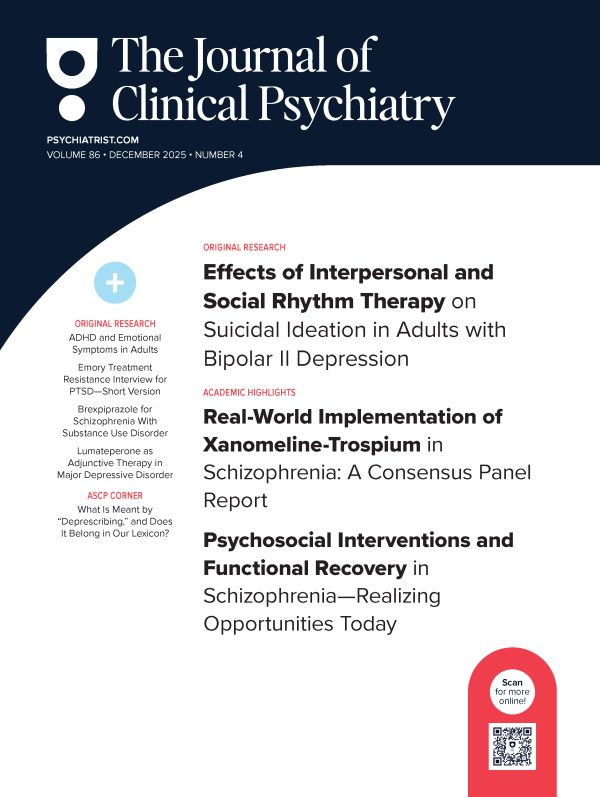Find more articles on this and other psychiatry and CNS topics:
The Journal of Clinical Psychiatry
The Primary Care Companion for CNS Disorders
Article Abstract
Background:To investigate clinical characteristics and adequacy of antipsychotic treatment in different phases of illness and treatment among suicide victims with schizophrenia.
Method:As part of the National Suicide Prevention Project, a nationwide psychological autopsy study in Finland, all DSM-III-R schizophrenic suicide victims with a known treatment contact (N = 88) were classified according to the phase of illness (active/residual) and treatment (inpatient/recent discharge/other). Characteristics of victims in terms of known risk factors for suicide in schizophrenia, as well as adequacy of the neuroleptic treatment, were examined.
Results:Fifty-seven percent of suicide victims with active phase schizophrenia were prescribed inadequate neuroleptic treatment or were noncompliant, and 23% were estimated to be compliant nonresponders. Inpatient suicide victims had the highest proportion of negative or indifferent treatment attitudes (81%), whereas recently discharged suicide victims had the highest prevalence of comorbid alcoholism (36%), paranoid subtype (57%), and recent suicidal behavior or communication (74%), as well as the highest number of hospitalizations during their illness course and shortest last hospitalization.
Conclusion: Suicide risk factors in different treatment phases of schizophrenia may differ. Substantial numbers of suicide victims with schizophrenia are receiving inadequate neuroleptic medication, are noncompliant, or do not respond to adequate typical antipsychotic medication. Adequacy of psychopharmacologic treatment, particularly in the active illness phase, may be an important factor in suicide prevention among patients with schizophrenia.
Members Only Content
This full article is available exclusively to Professional tier members. Subscribe now to unlock the HTML version and gain unlimited access to our entire library plus all PDFs. If you’re already a subscriber, please log in below to continue reading.
Please sign in or purchase this PDF for $40.00.
Already a member? Login




